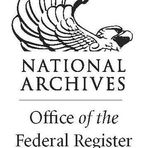The Unveiling of JFK Files: A New Chapter in a Lingering Mystery
March 19, 2025, 10:55 pm

Location: United States, District of Columbia, Washington
Employees: 501-1000
Founded date: 1934
The assassination of President John F. Kennedy is a dark chapter in American history. It’s a tale woven with intrigue, conspiracy, and unanswered questions. On March 18, 2025, former President Donald Trump announced the release of previously classified files related to JFK’s assassination. This decision has reignited public interest in a case that has haunted the nation for over six decades.
The day JFK was shot, the sun shone brightly over Dallas. Crowds gathered, waving and cheering as the presidential motorcade rolled through the streets. But in an instant, joy turned to horror. Shots rang out from the Texas School Book Depository. The world watched as the life of a charismatic leader was snuffed out. Lee Harvey Oswald, a name forever etched in infamy, was arrested shortly after. Two days later, he was killed by nightclub owner Jack Ruby, adding another layer of mystery to an already convoluted narrative.
The Warren Commission, established by President Lyndon B. Johnson, concluded that Oswald acted alone. Yet, the report did little to quell the storm of conspiracy theories that followed. Was Oswald truly a lone gunman? Or was he a pawn in a larger game? The questions linger like shadows in the corners of history.
In the early 1990s, the government mandated that all documents related to the assassination be housed in a single collection at the National Archives. This collection was to be opened by 2017, barring any presidential exemptions. As time passed, the public grew restless. What secrets lay hidden within those pages? What truths were still locked away?
Trump’s order to release the remaining classified files was met with a mix of anticipation and skepticism. Many experts cautioned against expecting groundbreaking revelations. The files, they argued, would likely not change the established narrative. Yet, the allure of the unknown is a powerful force. The prospect of new information is like a moth drawn to a flame.
The National Archives holds over six million pages of records, photographs, and artifacts related to the assassination. While the majority have been released, an estimated 3,000 files remain under wraps. Recently, the FBI discovered an additional 2,400 records related to the case. These documents are now part of the declassification process, a slow and meticulous journey toward transparency.
Among the released documents are CIA memos detailing Oswald’s activities before the assassination. They reveal his visits to the Soviet and Cuban embassies in Mexico City. Oswald’s actions raise eyebrows. Was he a mere misfit, or was he entangled in a web of international intrigue? The documents hint at a time when the Cold War cast a long shadow over American politics.
The release of these files is not just about JFK. It’s about understanding a pivotal moment in history. The assassination was a catalyst for change. It shattered the illusion of safety and innocence. The nation grappled with its identity in the wake of tragedy. The echoes of that day still resonate.
As the files trickle out, researchers sift through the pages like archaeologists unearthing relics of the past. Each document offers a glimpse into the workings of intelligence agencies. They reveal the paranoia and tension of the era. The Cold War was a chess game played in the shadows, and JFK’s assassination was a critical move.
Yet, the public’s appetite for conspiracy theories remains insatiable. The allure of the unknown is intoxicating. Theories abound: Was there a second shooter? Did the CIA orchestrate the assassination? Was it a plot by organized crime? Each theory adds another layer to the enigma.
The younger generation, unfamiliar with the details, is drawn to the mystery. They scroll through social media, consuming snippets of information. The JFK assassination is no longer just a historical event; it’s a cultural phenomenon. Documentaries, podcasts, and books keep the story alive. The quest for truth continues.
Trump’s decision to release the files is a double-edged sword. It satisfies a thirst for transparency but also opens the floodgates for speculation. The documents may not provide the clarity many seek. Instead, they may deepen the mystery, leaving more questions than answers.
As the nation reflects on JFK’s legacy, the files serve as a reminder of the fragility of democracy. The assassination was not just an attack on one man; it was an assault on the ideals of a nation. The quest for truth is a journey without a clear destination. The files may shed light, but they also cast shadows.
In the end, the release of the JFK files is a step toward understanding. It’s a chance to confront the past and grapple with its implications. The truth may be elusive, but the pursuit of it is essential. As new generations delve into the mystery, they carry the torch of inquiry. The story of JFK is far from over. The pages of history continue to turn, revealing new chapters in an enduring saga.
The day JFK was shot, the sun shone brightly over Dallas. Crowds gathered, waving and cheering as the presidential motorcade rolled through the streets. But in an instant, joy turned to horror. Shots rang out from the Texas School Book Depository. The world watched as the life of a charismatic leader was snuffed out. Lee Harvey Oswald, a name forever etched in infamy, was arrested shortly after. Two days later, he was killed by nightclub owner Jack Ruby, adding another layer of mystery to an already convoluted narrative.
The Warren Commission, established by President Lyndon B. Johnson, concluded that Oswald acted alone. Yet, the report did little to quell the storm of conspiracy theories that followed. Was Oswald truly a lone gunman? Or was he a pawn in a larger game? The questions linger like shadows in the corners of history.
In the early 1990s, the government mandated that all documents related to the assassination be housed in a single collection at the National Archives. This collection was to be opened by 2017, barring any presidential exemptions. As time passed, the public grew restless. What secrets lay hidden within those pages? What truths were still locked away?
Trump’s order to release the remaining classified files was met with a mix of anticipation and skepticism. Many experts cautioned against expecting groundbreaking revelations. The files, they argued, would likely not change the established narrative. Yet, the allure of the unknown is a powerful force. The prospect of new information is like a moth drawn to a flame.
The National Archives holds over six million pages of records, photographs, and artifacts related to the assassination. While the majority have been released, an estimated 3,000 files remain under wraps. Recently, the FBI discovered an additional 2,400 records related to the case. These documents are now part of the declassification process, a slow and meticulous journey toward transparency.
Among the released documents are CIA memos detailing Oswald’s activities before the assassination. They reveal his visits to the Soviet and Cuban embassies in Mexico City. Oswald’s actions raise eyebrows. Was he a mere misfit, or was he entangled in a web of international intrigue? The documents hint at a time when the Cold War cast a long shadow over American politics.
The release of these files is not just about JFK. It’s about understanding a pivotal moment in history. The assassination was a catalyst for change. It shattered the illusion of safety and innocence. The nation grappled with its identity in the wake of tragedy. The echoes of that day still resonate.
As the files trickle out, researchers sift through the pages like archaeologists unearthing relics of the past. Each document offers a glimpse into the workings of intelligence agencies. They reveal the paranoia and tension of the era. The Cold War was a chess game played in the shadows, and JFK’s assassination was a critical move.
Yet, the public’s appetite for conspiracy theories remains insatiable. The allure of the unknown is intoxicating. Theories abound: Was there a second shooter? Did the CIA orchestrate the assassination? Was it a plot by organized crime? Each theory adds another layer to the enigma.
The younger generation, unfamiliar with the details, is drawn to the mystery. They scroll through social media, consuming snippets of information. The JFK assassination is no longer just a historical event; it’s a cultural phenomenon. Documentaries, podcasts, and books keep the story alive. The quest for truth continues.
Trump’s decision to release the files is a double-edged sword. It satisfies a thirst for transparency but also opens the floodgates for speculation. The documents may not provide the clarity many seek. Instead, they may deepen the mystery, leaving more questions than answers.
As the nation reflects on JFK’s legacy, the files serve as a reminder of the fragility of democracy. The assassination was not just an attack on one man; it was an assault on the ideals of a nation. The quest for truth is a journey without a clear destination. The files may shed light, but they also cast shadows.
In the end, the release of the JFK files is a step toward understanding. It’s a chance to confront the past and grapple with its implications. The truth may be elusive, but the pursuit of it is essential. As new generations delve into the mystery, they carry the torch of inquiry. The story of JFK is far from over. The pages of history continue to turn, revealing new chapters in an enduring saga.
